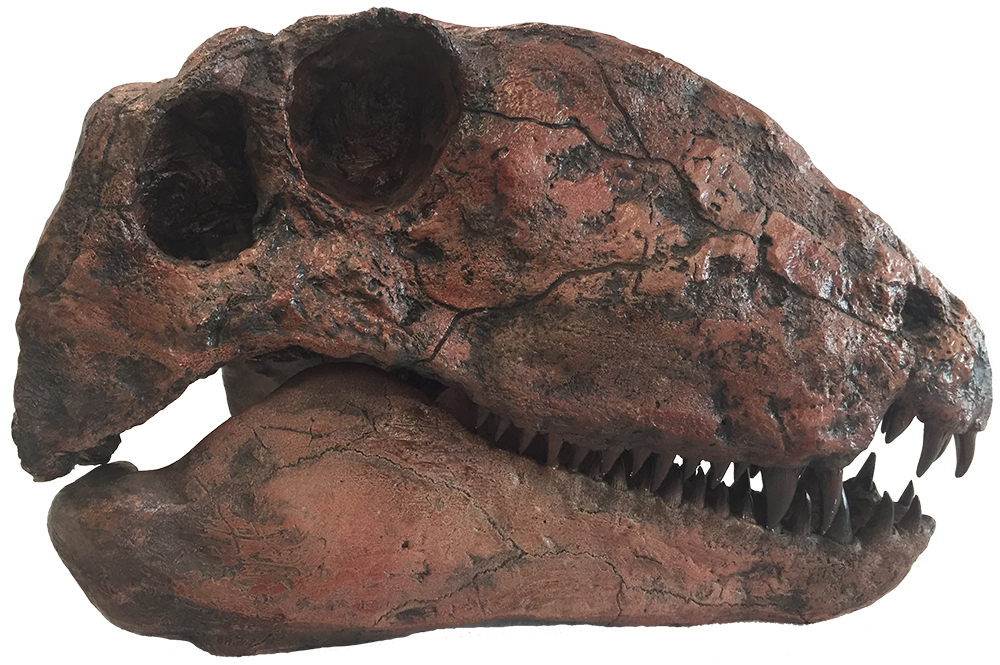
Early Permian ~295 to 272 MYA
Its name, Dimetrodon, is Latin for ‘two measures of teeth’ and refers to the large canines and smaller teeth present in its jaws. It was one of the first terrestrial predators with differentiated teeth. Although people more often recognize Dimetrodon because of the large sail that ran down its back supported by tall neural spines on its back vertebrae.
Dimetrodon was probably the top predator in its ecosystem, feeding on fish, aquatic amphibians, terrestrial reptiles, large prey, and even members of its own family. The largest Dimetrodon species ranged up to 4 meters in length and weighed up to 250 kg, making them among the largest terrestrial animals of their time. Dimetrodon was discovered by Edward Drinker Cope, whose rivalry with Othniel Charles Marsh touched off the ‘Bone Wars’ of American paleontology. Although the sail backed Dimetrodon is often mistaken as being a ‘dinosaur’, they were more closely related to modern mammals than dinosaurs and went extinct roughly 40 million years before the first dinosaurs arose.
From a paleontological point of view, Dimetrodon’s teeth were its most remarkable innovation. Its jaws were filled with large teeth of different sizes and whose shapes were configured for different uses. In our cast, pairs of large teeth fill the front part of the jaw, while smaller teeth extend back along the jaw. The larger teeth include incisor-like teeth at the front that gripped prey, large canine-like teeth behind them designed for killing, while the smaller teeth further back had fine serrations for cutting or slicing. Dimetrodon was one of the earliest terrestrial predators with teeth differentiated for gripping, killing, and slicing, and was also among the first terrestrial carnivores with serrated teeth. But even with all that, Dimetrodon’s dental innovations were not confined to its jaws. Dimetrodon also had a hidden line of teeth running across the roof of its mouth that helped pin struggling prey.